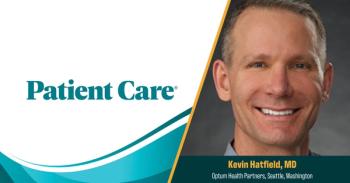
- Patient Care Online May 2024
- Volume 1
- Issue 3
Remotely Delivered Lipid Lowering Program Results in Sustained Target LDL-C Levels in High-Risk Population

ACC.2024: In a cohort of people at high risk of ASCVD, three-quarters achieved target LDL-C levels at 6 months and 12 months while using a remote algorithm-directed program.
Among a diverse cohort of individuals at high risk of
Led by Oan Unlu, MD, a Master’s degree candidate at Harvard Medical School’s Blavatnik Institute of Biomedical Informatics, the authors cite the significant gaps in results of
Unlu and colleagues enrolled 8294 individuals in the remote lipid management program that ran from 2018 to 2022. Of the full cohort, 2656 had known ASCVD, 2887 had LDL-C >190mg/dL, 1388 had
Of the patients fully completing the program, 75.7% achieved target LDL-C levels at 6 months and 83.1% achieved target levels at 12 months, with similar effects among 4 risk groups (P < .001 for all). Participants who discontinued the program, but remained under usual care, had the lowest rates of achieving target LDL-C levels.
The researchers state that the remote program was executed “with minimal physician support,” highlighting the potential for reach to extend beyond the clinical setting to medically underserved populations. Participants were able to reach target LDL-C levels through interaction with the program and to maintain those targets for “at least 12 months.” “The attenuated effect on LDL-C in patients who prematurely discontinued the program highlights the need to improve patient engagement to maximize treatment plans,” they concluded.
Source: Unlu O, Blood A, Cannon CP, et al. Success of a remotely delivered lipid program in achieving target low-density lipoprotein cholesterol levels. Abstract presented at: American College of Cardiology 73rd Annual Scientific Sessions and Expo. April 6-8, 2024. Atlanta, GA.
Articles in this issue
Newsletter
Enhance your clinical practice with the Patient Care newsletter, offering the latest evidence-based guidelines, diagnostic insights, and treatment strategies for primary care physicians.




















































































































































































































































































